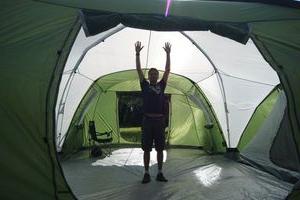Tourist primus: user's manual, tips "experienced"
All advantages of Primus can be goodtell supporters of long trips, which had to spend in the mountains for more than a day. Only those who had to carry in their backpack not only warm clothes, sleeping bag, tent and food, but also firewood, can understand the value of this device for cooking hot food in such difficult conditions.
Description of the principle of action
Both household and tourist primus work onthe principle of a soldering lamp. The liquid fuel in the tank of the device is fed into the burner tube by means of the generated pressure. Here, gasoline or kerosene is heated and, evaporating, is pushed out through the nozzle openings. In order for the process to proceed in the normal mode, it is necessary that the built-in piston pump constantly maintain the pressure in the reservoir.
Before ignition, the burner metal must be heated. You can do this by first splashing a little kerosene, or set fire to pieces of dry alcohol on top.
Mixed with air, fuel vapors burn inburner, heating dishes with water or food, put on top. The average operating time of the device is about 50 minutes. This makes it possible to boil the kettle, to cook a simple hot dish (for example soup or porridge).

Bumblebee that hums, but does not fly
Tourist primus is a device for heatingwater and cooking, which works on liquid fuel (kerosene or gasoline). There are modern models that use small gas cartridges.
The first such device appeared 8 years beforethe end of the 19th century in Germany and quickly "won" the sympathy of the townsfolk. In the Union, the production of household burners began in the twenties of the 20th century. Each self-respecting family had a gasoline stove in its kitchen. Tourist people also quickly appreciated the advantage of this lightweight and unpretentious device.

Operating principle
How does the Primus stove work? The instruction is extremely simple:
- install the instrument on a horizontal surface;
- gently fill the fuel tank in the fuel tank;
- rhythmically moving the lever of the built-in pump, pump up the pressure;
- with the help of burning dry alcohol slightly heat the plane of the burner itself;
- gently turn the valve.
Fuel, getting from the reservoir into the delivery pipeburner, evaporates when heated. Flammable vapors, leaving the nozzle, burn when mixed with air. In order for the whole process to pass in a normal and constant mode, the preliminary heating of the working part of the primer is required. And before the most ignition in the tank with fuel pumping the air, creating a pressure that must be maintained.
If ignition is replaced by a blue flame fromthe nozzles suddenly fly out black and gray smoke, which means that the Primus itself is not heated enough. A few minutes of patience, and the "breadwinner" will start to emit a uniform buzz. Perhaps, that is why one of the models was called "Shmel".

Who Invented the Primus Primer
Photos and information from the archives saved the date and nameinventor: in 1892, Franz V. Lindqvist, subsequently founded a company to produce these heating appliances. Similar burners began to be produced in the Union since the early 1920s, and they quickly won the respect of housewives.
The first models were a simple copy of foreign Primus stoves. Later they were changed and improved.
Let's list some of the most popular models:
- Tourist Primus, which was called "Swede"(according to the country of manufacture) is checked by climbers of the whole world in the conditions of the most serious temperatures and heights. The size of 13 by 10 cm, weighs a pound, 1 liter of water boils in about 7 minutes, at one dressing in 120 ml works a little less than an hour.
- "Ogonek" is a compact and reliable Soviet-made device without a pump, weighing about 800 g, with a capacity of 120 ml.
- Motor Sich (Ukraine) - a larger device, liter capacity and weighing 1.5 kg, runs from 3 to 6 hours.
- "Tourist" can be used both for cooking food, and for drying clothes and damp shoes.
- Modern multi-fuel burners "Himalayas" withreplaceable burner heads are able to work from gasoline, kerosene, gas. At a small size and weight of 505 grams, the water on such a burner boils in just 4 minutes.

Safety precautions and tips "experienced"
Experienced tourists recommend to have with them inhike a piece of fiberglass. How to use it? After ignition and installation on a tourist stove with water, the entire structure is closed on top with this cloth for better heat preservation. In addition, after using it, the burner is disassembled and cleaned, the fiberglass wraps the flask of the device when carried in a backpack.
If the surface of the earth is not very even, the pot can be placed not on the Primus itself, but on stones, and pushed the burned burner from below.
And several recommendations for safe use:
- Fuel is better to carry in eggplants, placing them in the side pockets of the backpack.
- Fuel can only be poured into a completely cooled device.
- Primus should not be overheated in any case.
- Categorically it is not recommended to use the appliance inside the tent.
A successful trip and a pleasant appetite to you, lovers of heights, fishing or hunting!
</ p>




